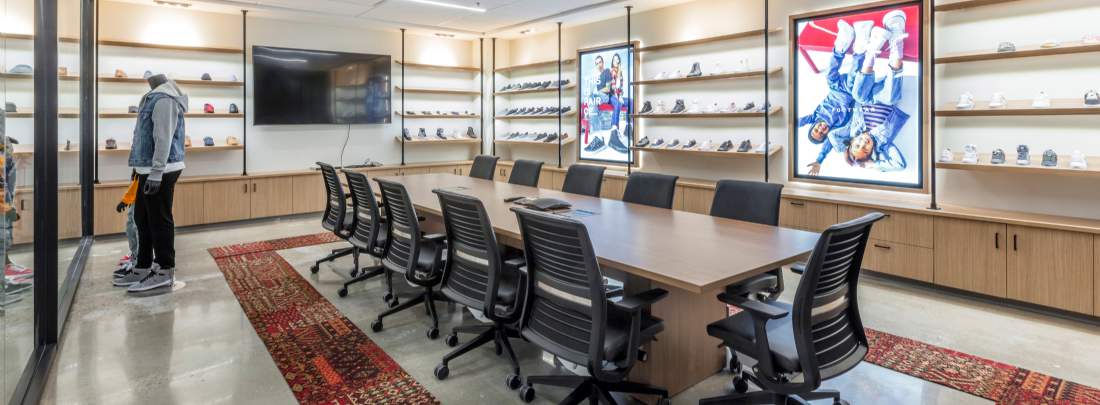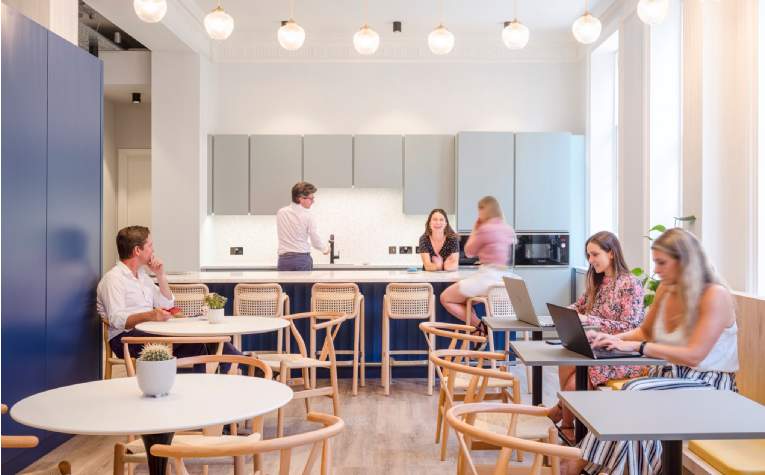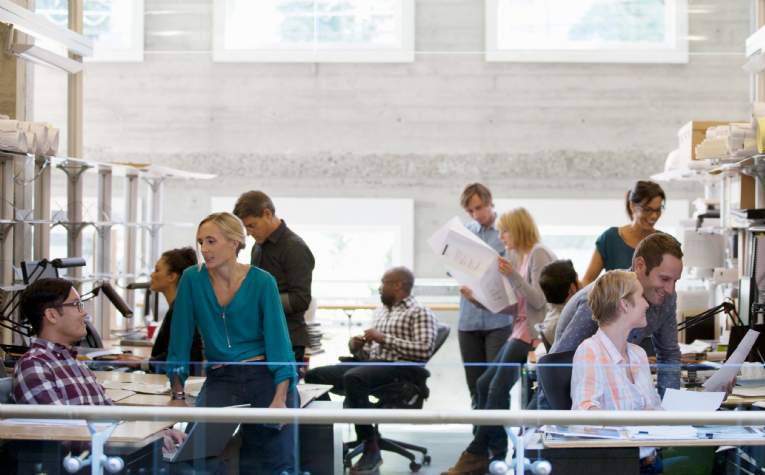The consumer goods sector is a vibrant and diverse industry that focuses on creating appealing products for individuals and households. Companies in this market produce a wide range of items that touch people’s daily lives, from convenience products such as a simple bar of soap, to luxury items such as an expensive watch.
Due to the unique nature of consumer goods companies, workplace design and planning within this industry presents a specific set of challenges. From fostering innovation and collaboration, to optimizing operations, consumer goods businesses must navigate a multitude of considerations when crafting their work environments.
Below are six workplace-planning challenges and opportunities companies in this competitive sector are facing right now:
Ensuring the workplace is a clear representation of brand and mission
In consumer goods, brand is everything. But just as consumer perception of a brand drives loyalty, the employee experience of that same brand also solidifies commitment and engagement at work. Companies must consider how well their workplace supports their brand, mission, and culture for employees. Infusing the history, mission, culture, and ideals of a consumer brand within the work environment can help employees identify with the customer experience as well as embrace the values that the company embodies, such as sustainability, wellness, or diversity and inclusion.
Integrating adaptable client-facing spaces with AI and digital technologies
While many other sectors have cut back on client-facing space since the pandemic, the need for it within consumer goods companies remains constant, as courting buyers is central to product distribution. Yet most client-facing spaces need not remain limited to client use. They can be thoughtfully planned as dual purpose to accommodate employee use, helping to manage space costs. Incorporating digital tools and technology can support flexible uses within client-facing areas.
The next wave of technology to impact these spaces will be AI. This will heighten product experiences for clients and buyers and provide employees more efficient ways of working together. Showcasing products in a digital format may also change the requirements for these spaces – in some cases, dramatically shrinking the required footprint.
Sharing testing labs or other specialty spaces and departments and brands
Large conglomerates that market multiple brands, such as Nestlé or Procter & Gamble, have much to gain from optimizing their real estate portfolios. One way of finding efficiencies across the portfolio is to identify opportunities for sharing space between brands. Specialty spaces such as product testing labs, which are core to the product development process, are a great candidate for planning as a shared resource, fueling innovation and exchange of ideas across brands while also saving on real estate costs.
Encouraging cross-departmental knowledge sharing to improve speed to market
In any consumer goods company, sales and marketing teams must stay connected with what is happening around the company. Their understanding of how and when new products are being developed informs their go-to-market strategy. Planning deliberate connection points between creatives and sales and marketing teams will facilitate this critical knowledge sharing and fuel stronger sales strategies.
It is also a common scenario within consumer goods companies to see traditional conference rooms spontaneously converted to scrum space with pinup boards when a given business team needs it – taking away essential meeting space that other teams may need. Utilizing empty wall space for tackboards in the open work environment, is one approach to mitigating this space squeeze and providing the collaboration space all teams need.
Optimizing goods storage space to maximize cost savings
Consumer goods companies naturally have a large amount of items, mainly product samples, to store within the workplace. As storage needs can be both large and costly, adopting creative or hybrid approaches can both save space and promote sustainability. As an initial step, companies can ask their suppliers if 3D digital mockups of the product are available to minimize ordering of physical samples. Businesses can also reduce the amount of physical storage space needed by adopting digital archiving or opting for cost-effective offsite storage.
Instilling a culture of transparency and accountability, so all stakeholders feel engaged with ESG goals
By communicating on progress around Environmental, Social and Governance (ESG) initiatives with transparency and intention, consumer goods companies can build trust in the workplace while demonstrating a commitment to sustainable practices. Data tracking and reporting systems for ESG metrics do more than ensure accuracy; they foster stakeholder engagement with strategies, for instance, to reduce organizational carbon footprints, or minimize waste. Firms should also link cultural norms with key initiatives, such as health and wellbeing. Such approaches encourage a sense of ownership and shared responsibility among all stakeholders, driving collective efforts towards achieving positive outcomes.
Planning Work Environments that Inspire
As the consumer goods industry continues to evolve, prioritizing thoughtful and adaptable workplace design will remain essential for handling the challenges and seizing the opportunities that lie ahead. By embracing flexibility and new technologies, companies can create environments that inspire and empower their workforce, ultimately strengthening product lines and increasing sales volume.
Photo credit: Macro, A Savills Company

.jpg)

.jpg)

.jpg)
.png)
.png)
(1).jpg)
